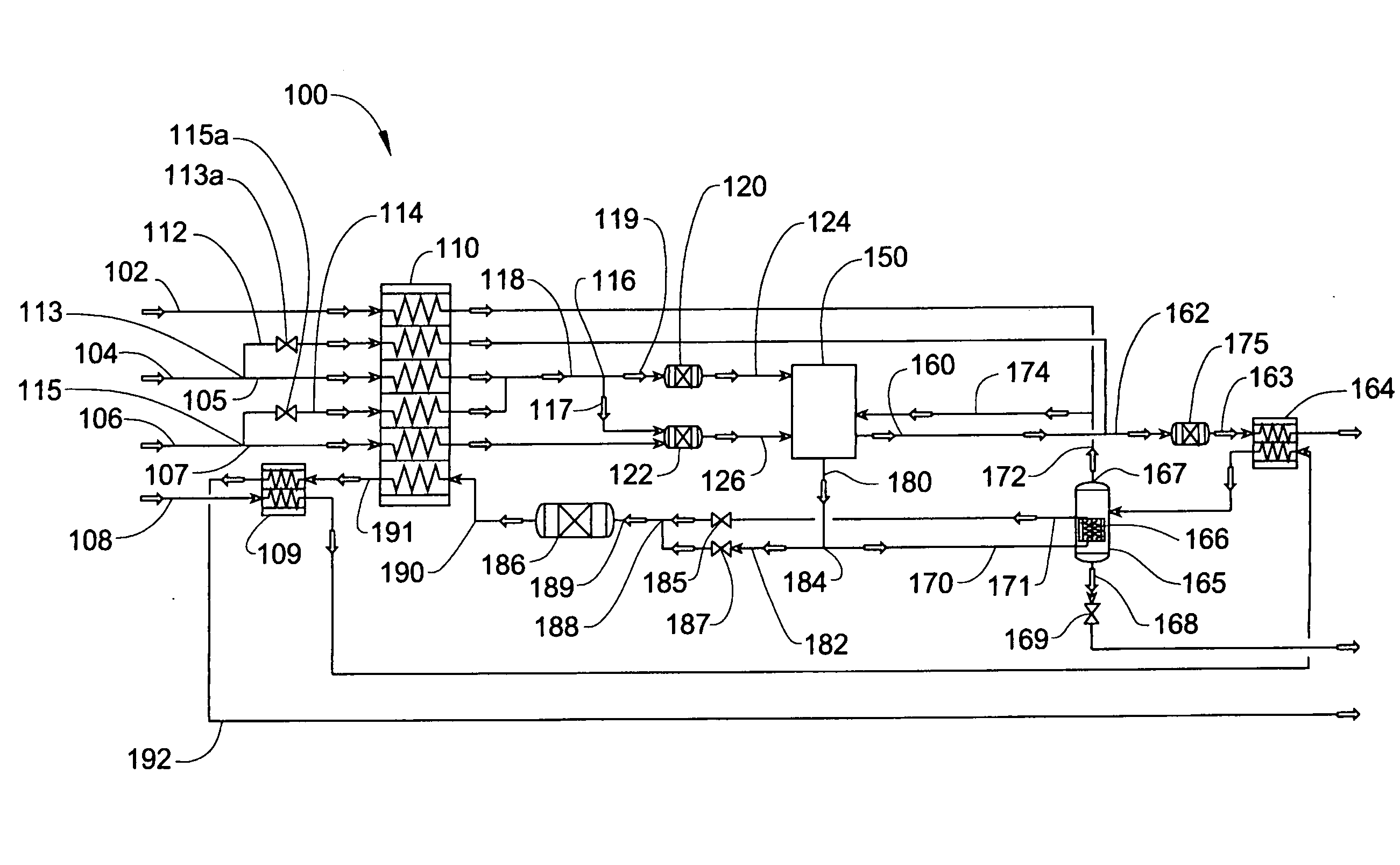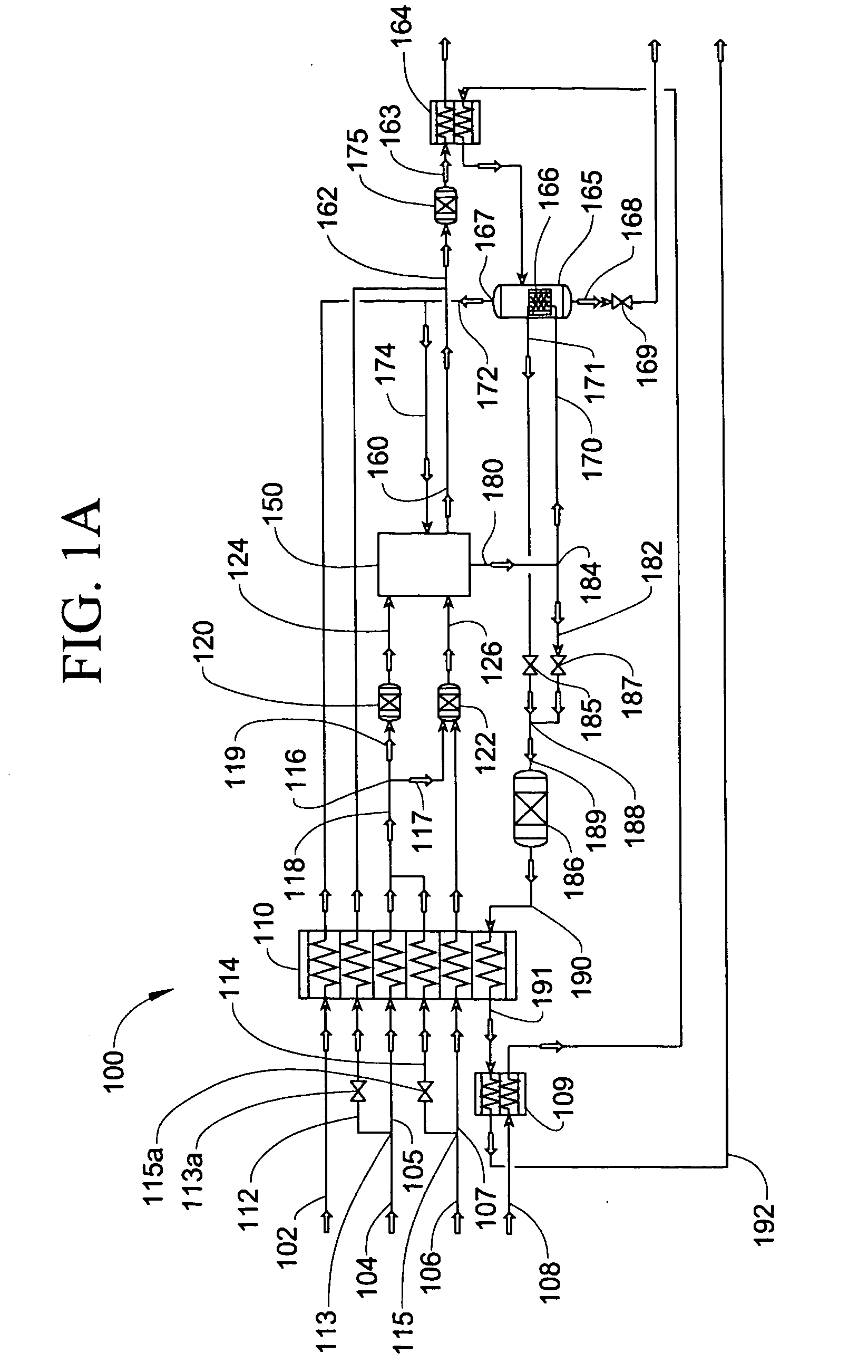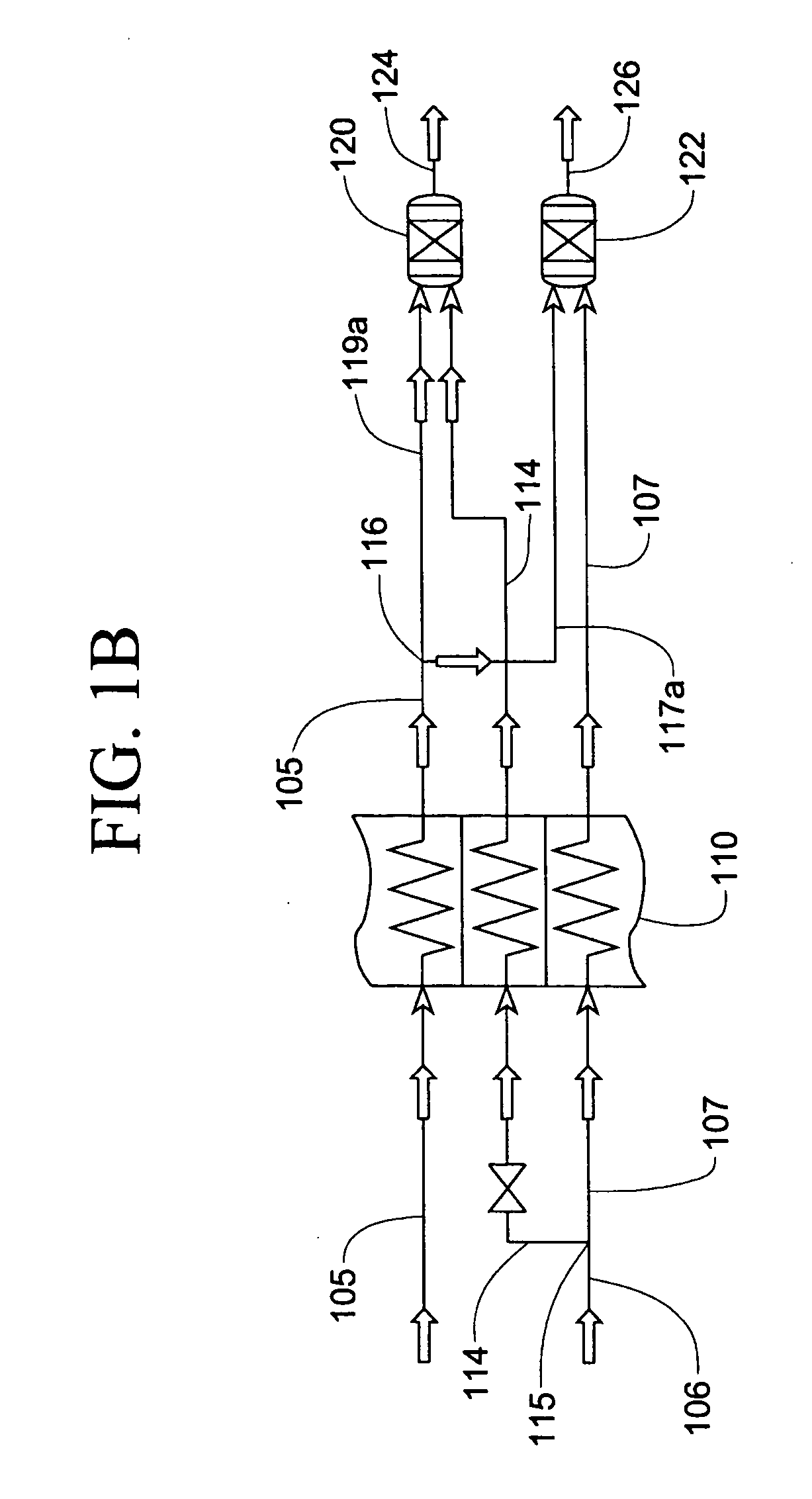Reforming apparatus and method
a technology of gaseous hydrocarbons and apparatus, applied in the direction of solventing apparatus, energy input, manufacturing tools, etc., can solve the problems of metal dusting constant threat, inefficiency and equipment failure, corrosive degradation of alloys into dust,
- Summary
- Abstract
- Description
- Claims
- Application Information
AI Technical Summary
Benefits of technology
Problems solved by technology
Method used
Image
Examples
Embodiment Construction
[0061]In some embodiments, the process or apparatus comprises a process or apparatus for steam reforming of gaseous hydrocarbons to produce syngas where the feed rate of the gaseous hydrocarbon is from 1 to 10,000 standard cubic meters per hour (“SCMH”), such as from 2 to 5000 SCMH, such as 1 to 10, 10 to 100, 100 to 1000, 1000 to 10,000, 10 to 4000, 15 to 3000, 20 to 2000, 30 to 1000, 40 to 500, 50 to 250 or 60 to 100 SCMH.
[0062]In some embodiments, a process or apparatus for steam reforming of gaseous hydrocarbons to produce syngas, may have a hydrocarbon conversion of 50% or greater such as from 50% to 95%, such as from 55% to 90%, from 60% to 85%, from 65% to 80% or from 70% to 75%.
[0063]In some embodiments, a process or apparatus for steam reforming of gaseous hydrocarbons to produce syngas, may have an energy efficiency of from 50% to 90%, such as from 55% to 85%, from 60% to 80% or from 65% to 75% when calculated according to the following equation:
(LHVs*Ms-LHVf*Mf)LHVng*Mng[...
PUM
| Property | Measurement | Unit |
|---|---|---|
| heat | aaaaa | aaaaa |
| pressure | aaaaa | aaaaa |
| energy efficiency | aaaaa | aaaaa |
Abstract
Description
Claims
Application Information
 Login to View More
Login to View More - R&D
- Intellectual Property
- Life Sciences
- Materials
- Tech Scout
- Unparalleled Data Quality
- Higher Quality Content
- 60% Fewer Hallucinations
Browse by: Latest US Patents, China's latest patents, Technical Efficacy Thesaurus, Application Domain, Technology Topic, Popular Technical Reports.
© 2025 PatSnap. All rights reserved.Legal|Privacy policy|Modern Slavery Act Transparency Statement|Sitemap|About US| Contact US: help@patsnap.com



